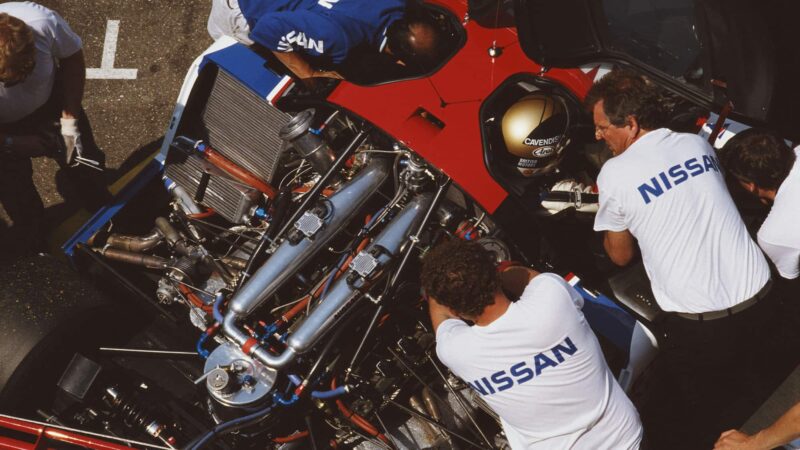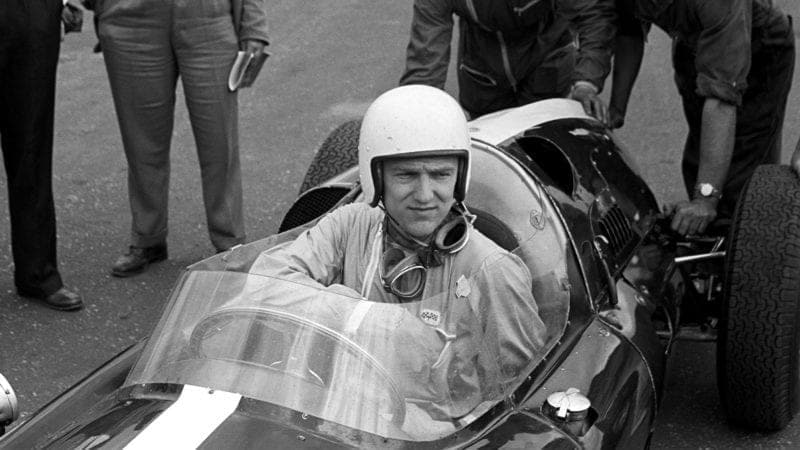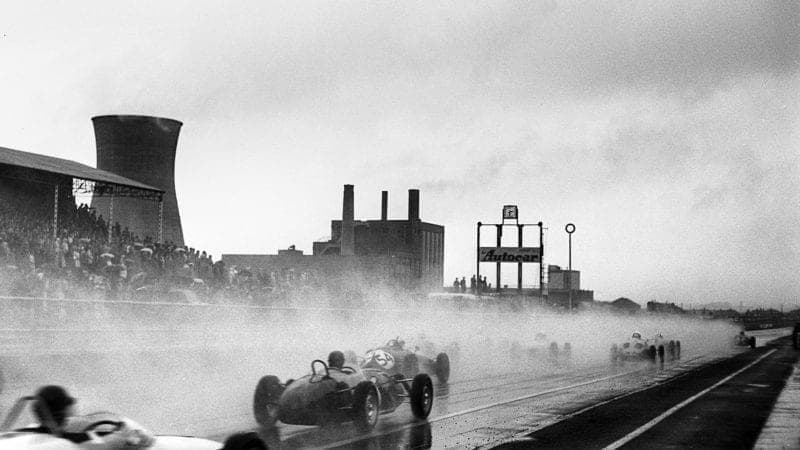Working 100-and-something hours a week for Mr E understandably became too much for Greene, and so he moved on to the world of endurance, running Ecurie Evergreen for debonair privateer Alain de Cadenet.
“He was pretty out there,” Greene remembered. “A longhaired bloke with a great fur coat down to his ankles and a purple Ferrari Dino 206. He could sell ice to Eskimos.”
The pair had a McLaren M8C Can-Am car converted to take a Cosworth DFV (de Cadenet and Craft driving), then Greene made his first foray into Le Mans team management.
He ran friend Craft in a Ferrari 512S with de Cadenet’s co-owner David Weir, running fourth until the clutch broke. The car had been a spare bought from Steve McQueen after the filming of Le Mans.
Next, de Cadenet bought a Brabham BT33 and the small band found themselves in a brief two-race F1 foray.

Greene (far right) talks to Julian Bailey in car at Dijon in ’89
Pascal Rondeau/Getty Images
“It was a tiny team,” Greene said. “Alain, Chris, me and Keith Baldwin. We had a Transit and a trailer. That was the team. We had no tools – at Le Mans we had to borrow every roll of tape in the pits when the bodywork came adrift. That was a heroic bloody weekend. I slept for 14 hours straight afterwards.”
After managing another privateer F1 effort, John Watson’s Hexagon team, then running International Tyres – again for Bernie – Greene headed Gordon Spice’s endurance squad, and had immediate success.
“We ran the works Ford Capris, and won five 24-hour races, came second in the Spa and ‘Ring 24 Hours, and won the Belgian championship,” he said.
After Spice, Greene would run endurance efforts for John Fitzpatrick and Richard Lloyd Racing, before starting his own team, GP Racing, which would achieve second in class at Le Mans and a class win at Brands Hatch.





